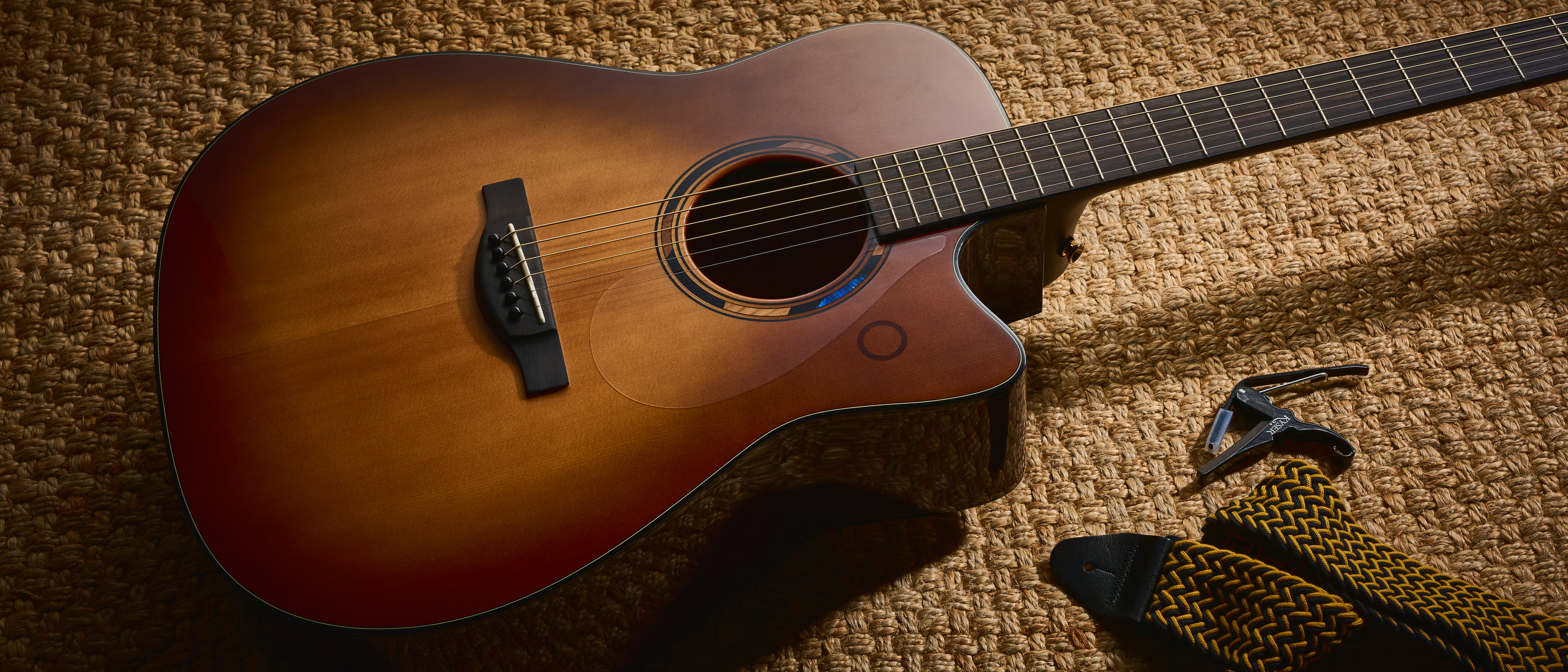MusicRadar Verdict
Reservations about the proprietary cable and rechargeable battery's live practicality aside, this is a notable step forward for the TransAcoustic series in terms of features – but you need to decide if the effects are worth the outlay for your ambitions.
Pros
- +
Four inspiring effects without an amp in sight
- +
Looper is useful for practice
- +
A well-built Yamaha acoustic
Cons
- -
Slow charging time Vs battery life
- -
Proprietary charging cable feels like a backward step
- -
High action on our test model
MusicRadar's got your back
Need to know
Yamaha is definitely a familiar name in acoustic guitar, but what's the TransAcoustic part all about?
The reality of being a guitarist is most of us are playing on our own most of the time, so it's understandable we seek inspiration to motivate us in those moments. When Yamaha introduced the first TransAcoustic models in 2016 with the LL-TA dreadnought and LS-TA concert, it wanted us to explore how an acoustic guitar can inspire us in new ways – by adding effects that don't need an amp or pedal to be heard.
No amp? How does that work?
TransAcoustic technology was something the Japanese company first developed with pianos a decade ago, before turning their attention to acoustic guitar to offer reverb and chorus effects that you can dial in with controls on guitar, and hear them applied to your playing. It's best for Yamaha to explain the science here…
"Two actuators installed on the inner surface of the guitar resonate in response to the vibrations of the strings,” it explains. “The vibrations generated by the actuators are then transmitted to the body of the guitar and to the air in and around it, resulting in authentic reverb, chorus and delay sounds that actually radiate from within the body.” Isn't science wonderful?
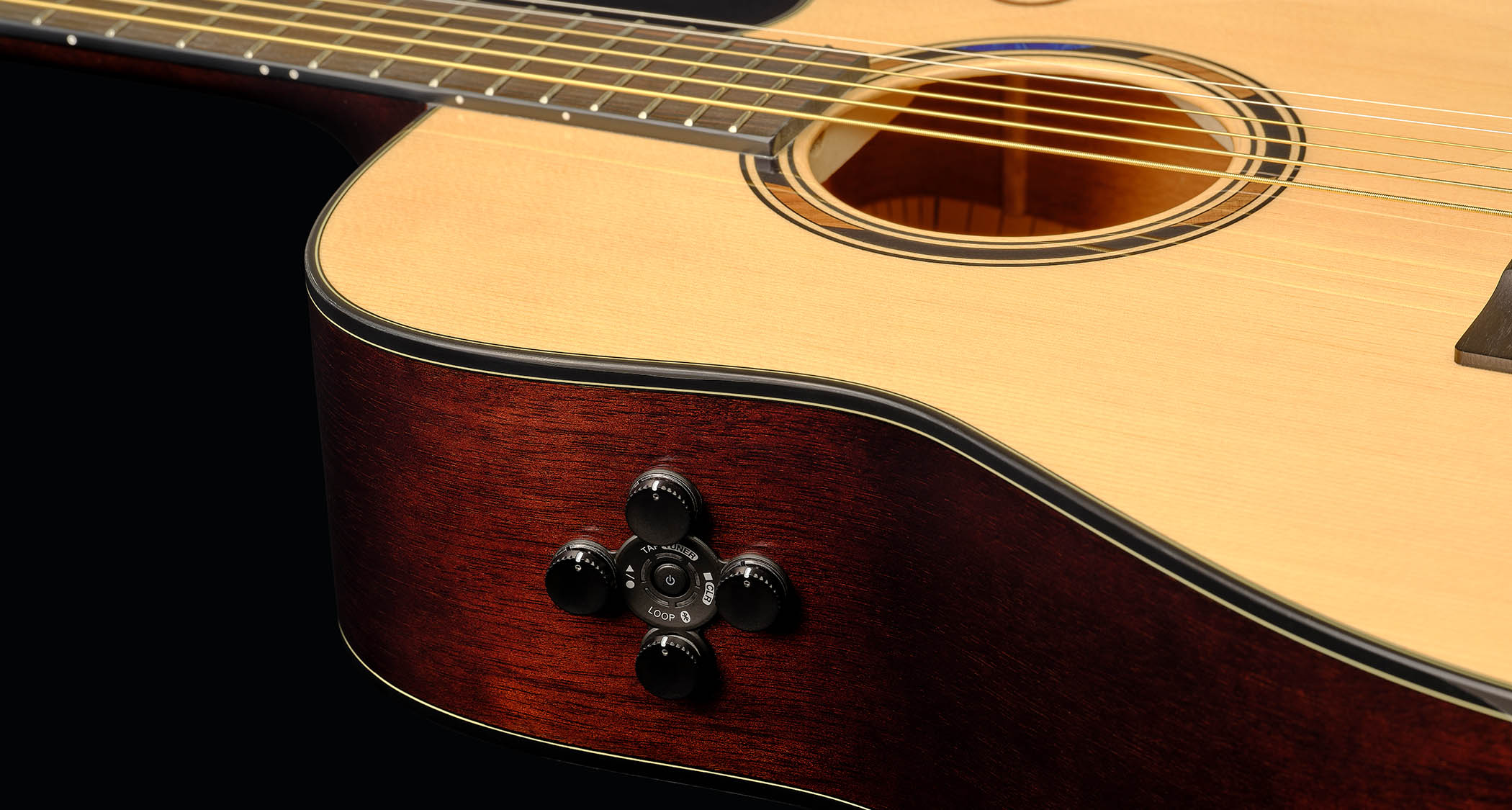
So six years on, what's changed with the TAGC 3?
Despite the name, the TransAcoustic TAG3 C is the beginning of the second generation of TransAcoustic guitars. The guitar itself is described by Yamaha as "an entirely new guitar design featuring new body materials".
Want all the hottest music and gear news, reviews, deals, features and more, direct to your inbox? Sign up here.
The first-gen rollout saw more affordable laminate back and sides models and even a nylon-string guitar, but this goes back to the more premium solid wood approach of those 2016 models that launched this technology. Now Yamaha has added delay, Bluetooth app control and audio streaming, plus looping. The guitar comes in two finish options too – Natural, and the Sandburst I'm looking at here.
The new features seem to have necessitated a change in how the guitar is powered too – it now comes with its own proprietary magnetic USB cable to charge an internal Li-on battery, whereas the previous TransAcoustics used a pair of AA batteries.
But what's the point of the app?
It's very useful actually – it allows you to select between different reverb, delay and chorus modes, as well as changing some settings for the onboard looper – that can be controlled (in part) by tapping that 'o' shape you can see below the soundhole.
Specs
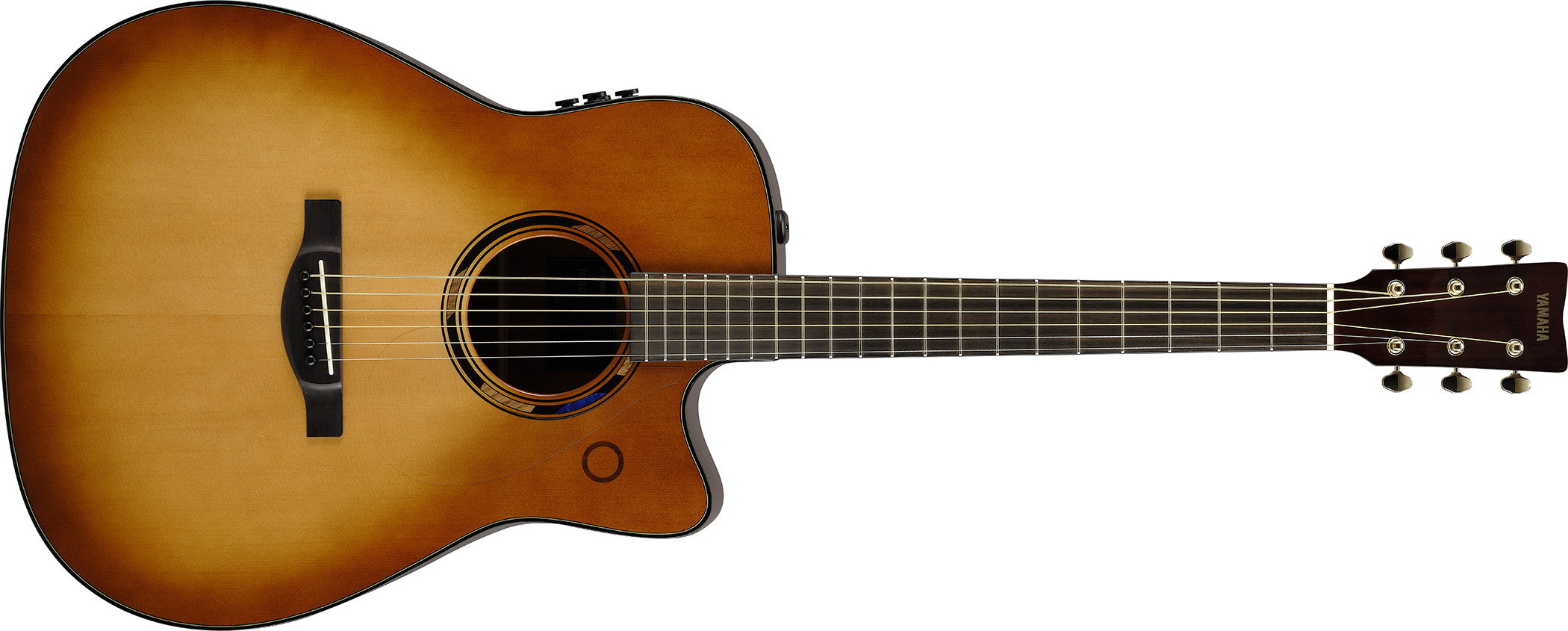
Launch price: $1,699.99/£1,639
Made: China
Body shape: Dreadnought cutaway
Body top: Solid Sitka spruce
Back and sides: Solid mahogany
Neck/shape: Mahogany
Scale/length: 25 9/16" (650mm)
Nut/width: Urea / 1 3/4" (44 mm)
String spacing at bridge: 55.5mm
Fingerboard/radius: Ebony/Body depth: 125mm
Finish: Include all finishes available in range
Bridge/pins: Ebony/ABS
Tuning machines: Open gear Champagne-Gold
Electronics: TransAcoustic (SYSTEM76) with built-in chorus, delay, reverb, looper and tuner
Controls: Line-out level, reverb, chorus, reverb, delay, looper level, tap sensor for ending loop record
Weight: 5.7lb/2.58kg
Case: Yamaha Hard Bag
Left-handed options: No
Contact: Yamaha
Build quality
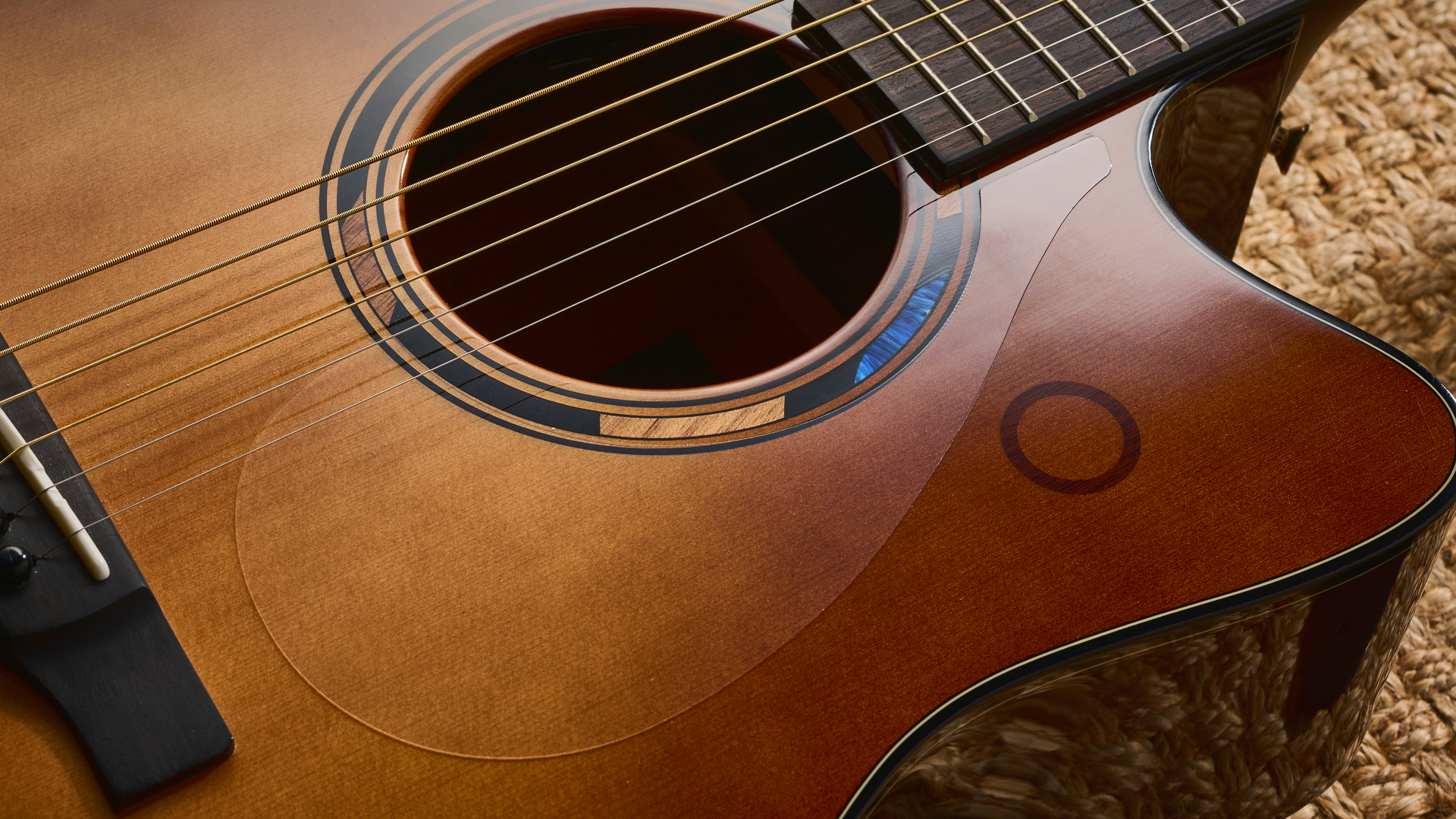
Build quality rating: ★★★★½
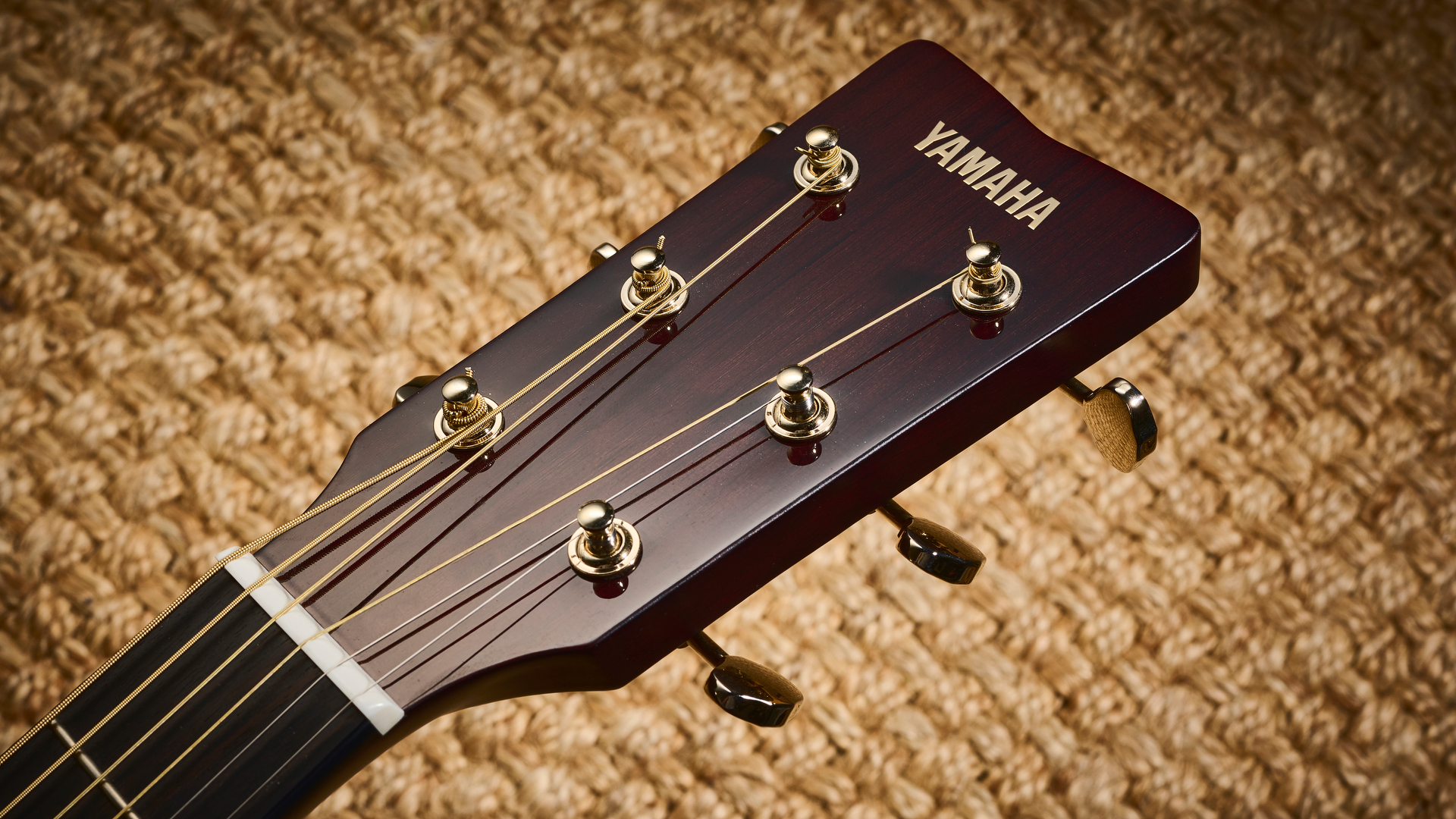
Yamaha knows how to build acoustic guitars, and previous TA models have impressed us as appealing guitars, before the technology they showcase. The gloss finish of the TransAcoustic TAG3 C holds up its end, with the Sandburst offering a darker hue in the hand than the press pics reflect. The blue ripple inlay on the soundhole adds an unexpected but classy subtle glimmer of colour and the choice of edge fret markers keeps things pretty minimal on the neck.
The decision to use open gear tuners gives this guitar a decided mix of traditional look and contemporary with its satin neck and electronic side. But it works – Yamaha is good at this kind of thing because they've put years into it.
A touch of the unusual is found on the top of the body: you may be wondering what the small dark wood inlaid circle on the lower bout is all about too. All will be revealed.
Playability
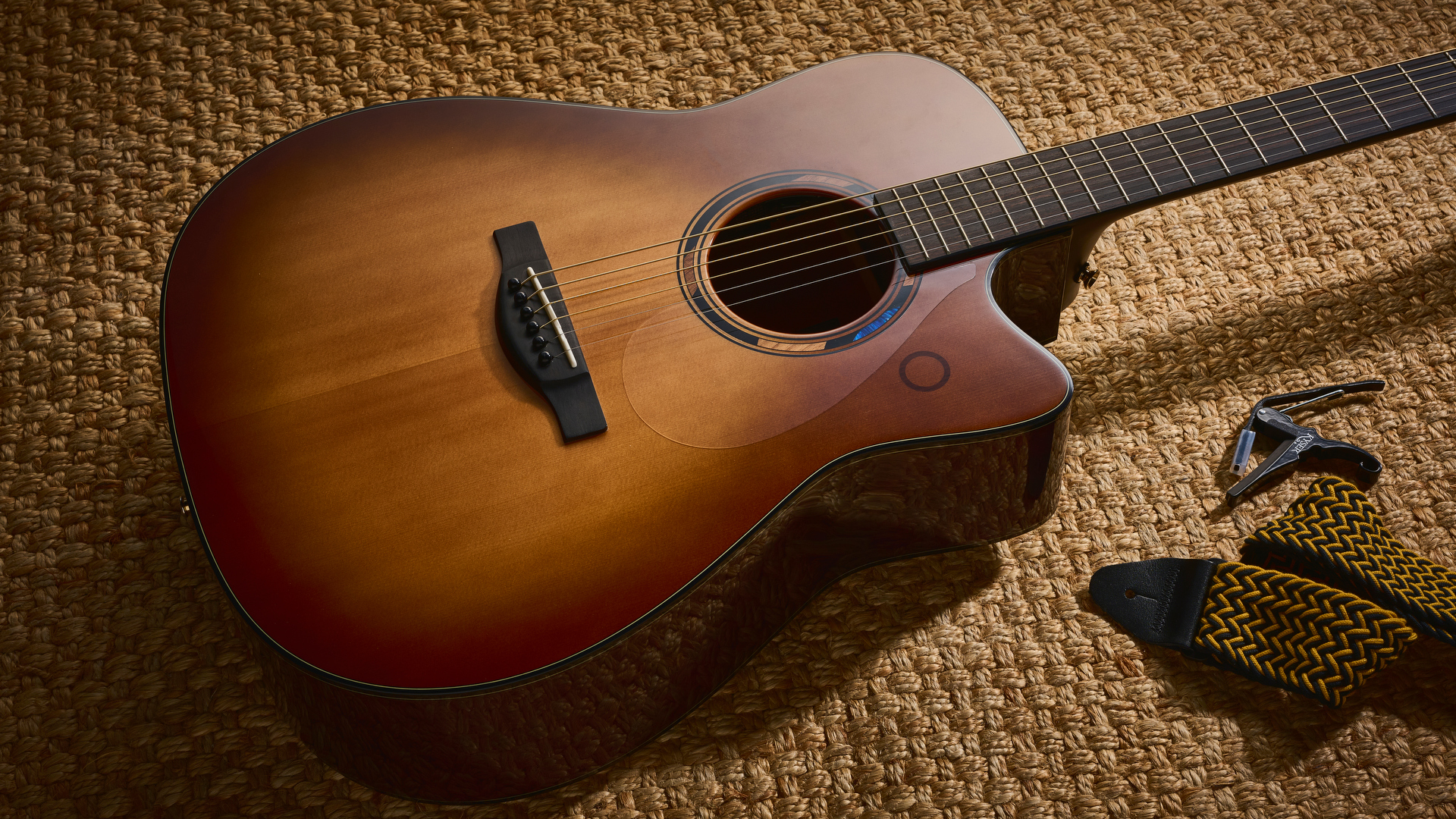
Playability rating: ★★★½
The action here is one of the highest I can recall on a review acoustic in recent memory
The playability isn’t such a doozy with this test guitar. The matte neck finish is hugely appealing to the touch, as is the fairly slim carve (the shape isn't stated by Yamaha but feels a C to me). It promises smooth transitions, but the action here is one of the highest I can recall on a review acoustic in recent memory.
Measuring at 2.60mm on the low E and 2.20mm on high E from the 12th fret (while fretted at the first) confirms the surprising and disappointing decision to ship this with such a challenging setup. It certainly makes chords and notes resonate with warmth, but slows down runs to explore the enhanced access of the cutaway.

I say warmth because the TAG3 C really has an appealing low-end unplugged. That’s not a given with dreadnoughts, especially with mahogany in the mix, but there’s something quite satisfyingly played-in about the response here, with the softer, rounded high-end helping chord work feel full.
That’s all very well, but the electronic possibilities are what's going to be the real sell here. Previous Transacoustics offered reverb and chorus that could be dialled in to the player's taste, powered by a pair of AA batteries. Now there’s a lot more going on…
Sounds
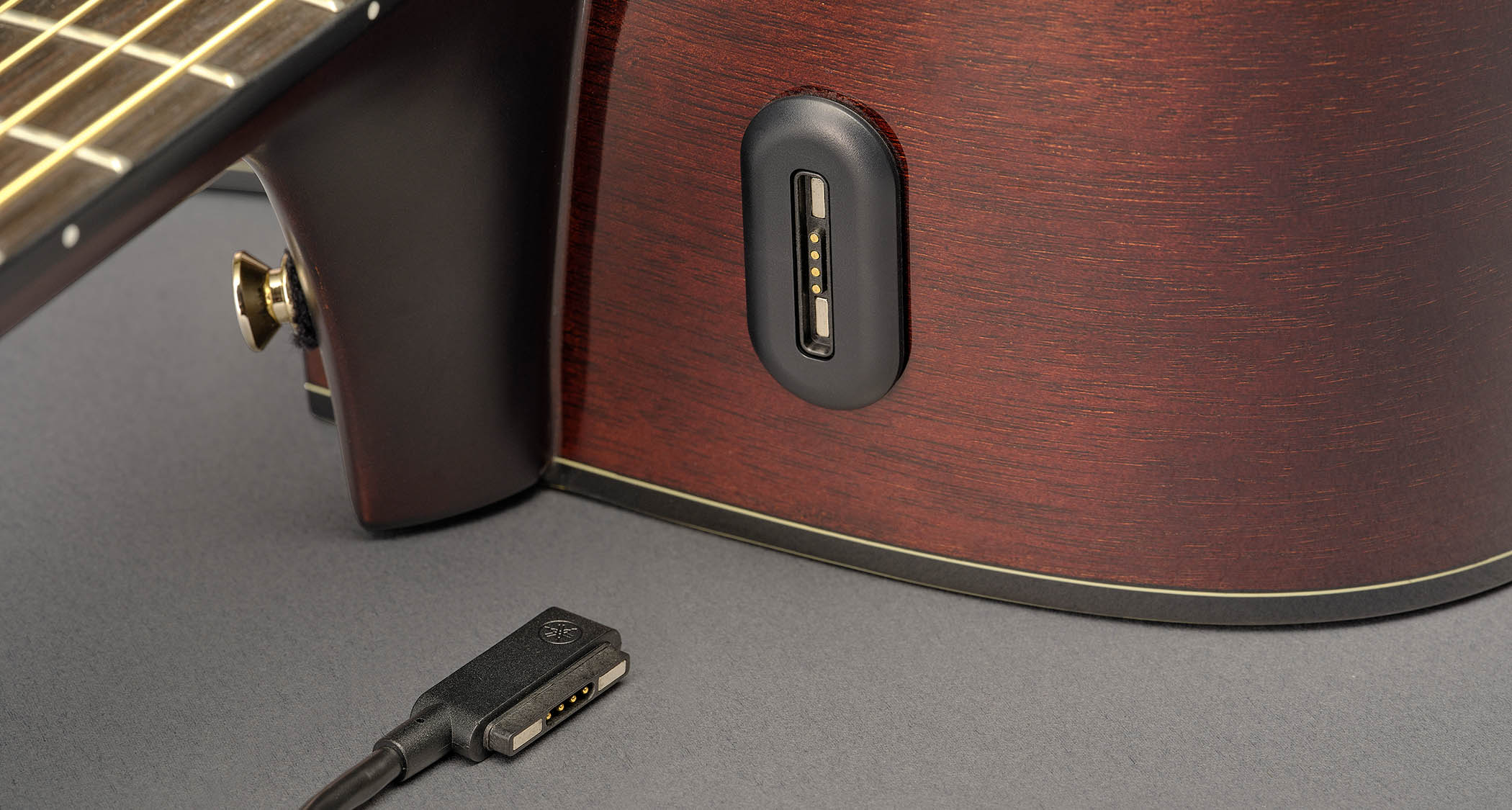
Sounds rating: ★★★½
I'm going to talk about sounds here, but also usability. Because I think with the Yamaha TransAcoustic both are heavily interlinked, more so than most electro-acoustic guitars out there right now. And what may seem like a small thing at first, really matters in the grander scheme of potential ownership.
As I mentioned previously, the TAGC 3 C has an internal (non-user removable) lithium-ion rechargeable battery that’s charged via a proprietary USB cable that features a magnetic connection to the guitar. On the one hand, players don't have to worry about a constant supply of AA batteries, on the other, this guitar offers 5.5 hours of use under "typical operating conditions" from a charging time of up to 4.5 hours. That doesn't seem like a great ratio in 2024 to me – and I believe it starts to raise question marks over this guitar's practicality as a stage instrument.
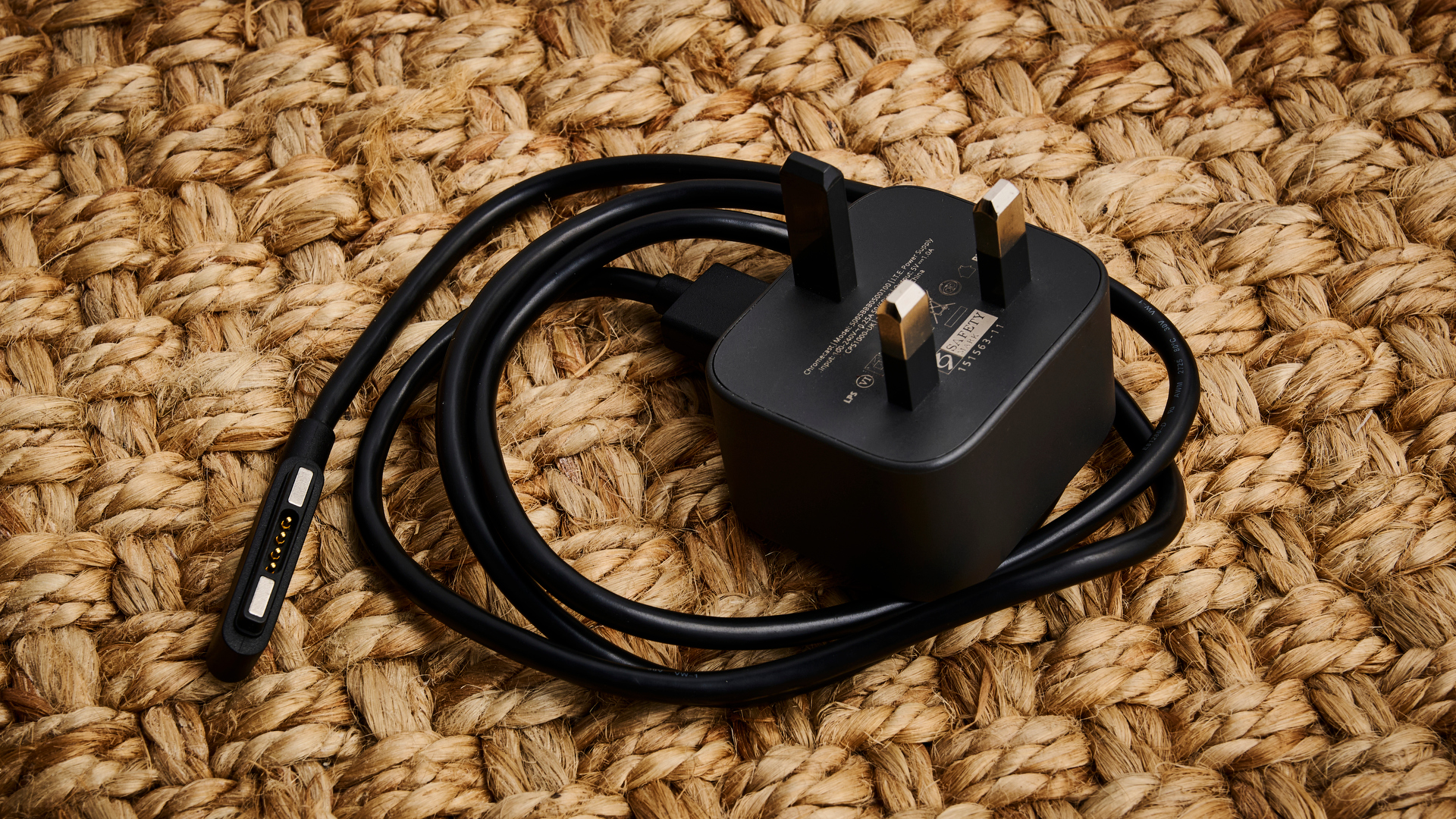
What if you forget to charge the battery between gigs? Well, Yamaha states that the electronics can be used while charging so that's something. But carrying a power pack in your pocket with a lead coming out of it while playing guitar… it doesn't seem very smart or something us guitarists are used to having to do.
In a musicians' world of replaceable and readily available XLR and IEC 'kettle' leads, this kind of move seems regressive for me, even when the technology it powers is clearly a step forward
Another concern I have is the cable itself – you can't just nip to the local electronics shop and pick one up. Lose it and you can't charge this guitar and use it for its intended purpose. You'd need to contact Yamaha for a replacement. This isn't something even USB-C smartphone users have to contend with in 2024. Guitars aren’t cell phones, of course, but even those tend to offer alternative third-party charging cable options.
In a musicians' world of replaceable and readily available XLR and IEC 'kettle' leads, this kind of move seems regressive for me, even when the technology it powers is clearly a step forward. So to reiterate; what may at first seem like a small thing will matter every time you need to find the cable and charge it. It's a similar criticism the Fender American Acoustasonic models faced from some quarters, but even Fender had the decency to use a universal USB cable.
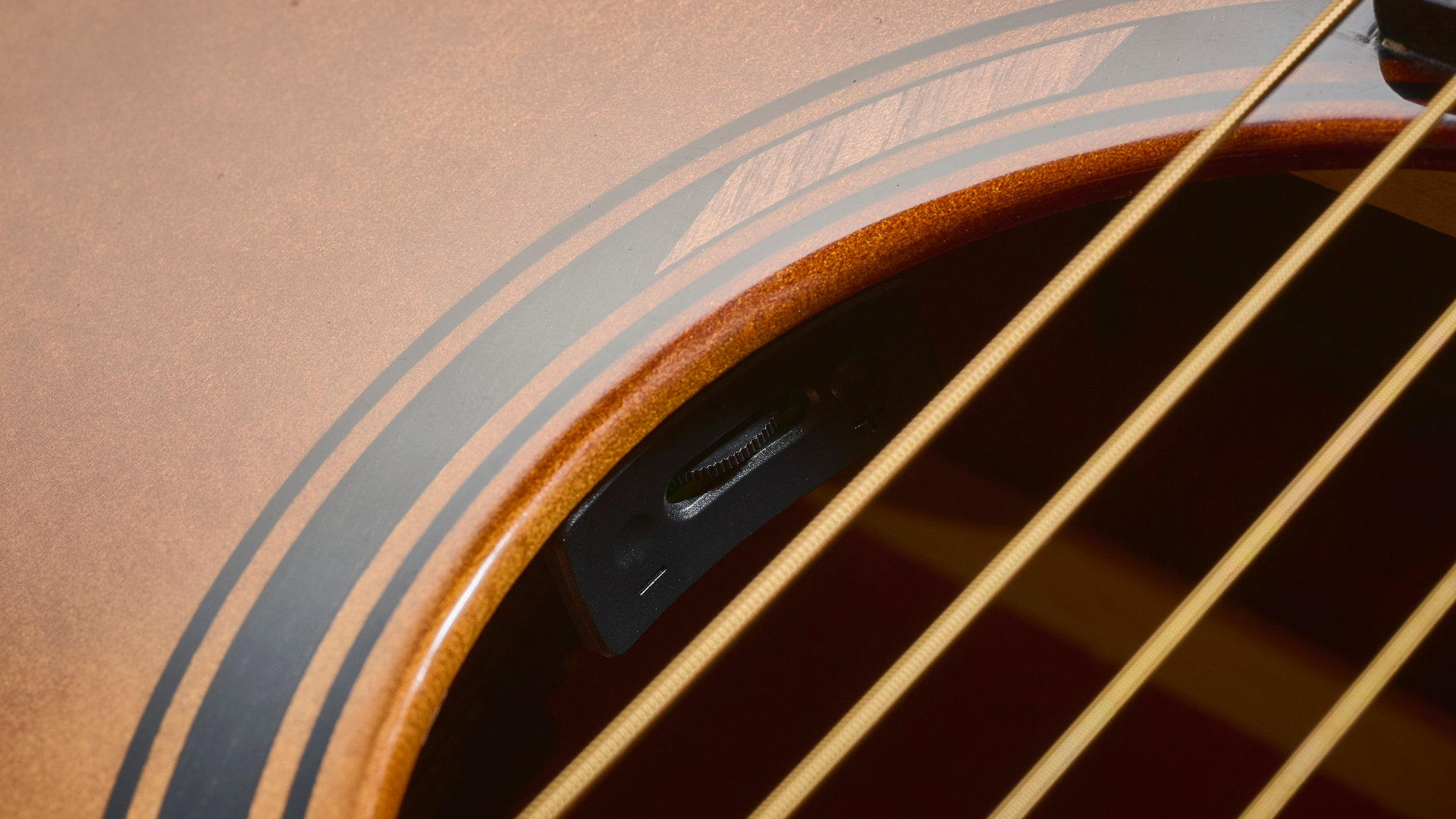
Some of the live potential here is at least enhanced here by placing a new line out level control inside the soundhole, and the controls on top expand the previous three rotary controls to four. Like previous models, the guitar ships with a plastic label on top of these to show which control serves each effect – but once that comes off you'll have to remember what does what. I think some kind of permanent indicators – however low-key – would have been useful for this second-generation TransAcoustic.

Each rotary knob serves as the level control for reverb, chorus, delay and loop level, while pressing down on the buttons activates functions including the tuner, Bluetooth and loop recording. I feel you may need the online manual to get started properly on this as it's not quite intuitive enough. But there's also a whole new level of control with the TAG Remote mobile app that has launched with this model.
This is the first Transacoustic to offer app connectivity, and that’s good news for getting more out of the sounds here. I also found it connected to the guitar via my Pixel 7 Pro Android phone reliably – at one point catching me unaware when I'd accidentally played Spotify on my phone and the music came on through the guitar's soundhole.
Yes, it can do that – which is an alternative to using a separate speaker to jam along to for sure. But back to the effects, the app opens up new modes and parameters for them that take this TransAcoustic model deeper into the effects side than previous models.
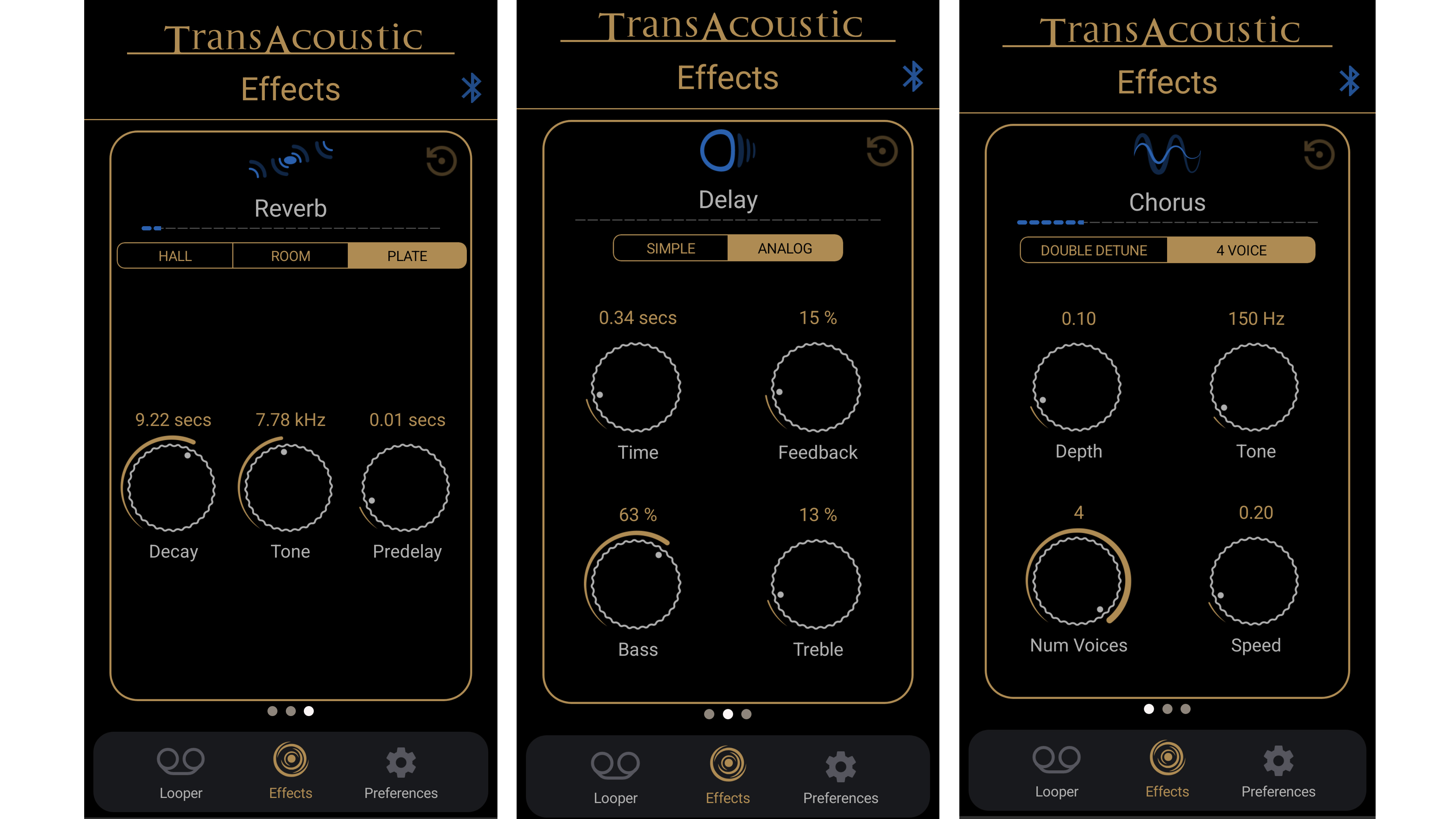
You get Hall, Plate and Room reverb, digital or analog-style delay and even a detune mode on the chorus, in addition to the kinds of parameters like Decay you’d expect on an effects pedal. Since the TransAcoustic launched, competition like Lava's 'smart' guitars and the latest ToneWoodAmp has expanded the scope for players (see my Also Try section) so this kind of expansion isn't just necessary for Yamaha to stay in the throng, but great for players too.
I think the reverb and sounds of the TransAcoustic TAG3 C are an improvement over the previous generation, though the caveat with the new delay mode is that the lower-end character of the guitar muddies the audibility of repeats at the lower frets. Indeed, the repeats in general could be brighter from both delay modes but that's perhaps a drawback of the acoustic technology involved here. Still, the tap-tempo – accessed by literally tapping the delay control/button – is handy and intuitive. Holding that same button down longer activates the tuner.

Once you get used to activating the looper, it's a really handy tool for practice and working on creative ideas
The looper look longer for me to feel comfortable with. While you use the main controls to activate the looper (with recording kicking in when you start playing), you actually stop the recording by tapping the circle shape on the guitar. You can adjust the sensitivity of this within the app, but it's obviously a different experience to using a looper pedal.
Once you get used to activating the looper, it's a really handy tool for practice and working on creative ideas. Ten of your loops can also be stored and recalled via the app, but the amount of overdubs you can layer with the looper is unlimited.
Yamaha TAG3 C TransAcoustic guitar: Verdict
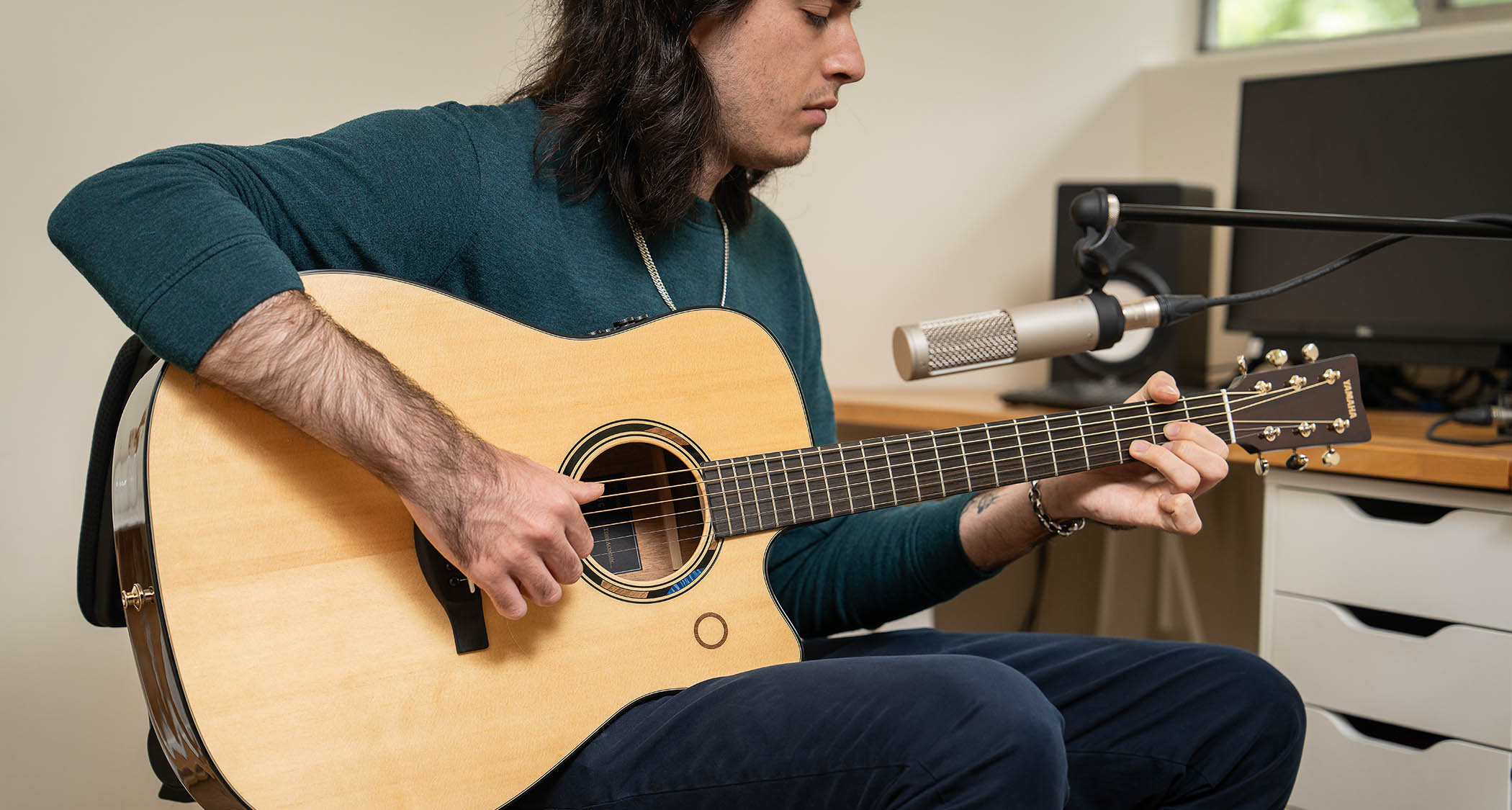
Six years on, the TransAcoustic project has expanded here and despite my reservations about the battery charging situation, Yamaha states that in the longer term, "The internal battery can be replaced at a certified Yamaha service centre."
I think that a specific drawback of this guitar could make it unsuitable for regular live use, but it’s still an inspiring acoustic for the home. I have concerns about guitars with rechargeable power sources and relatively short battery life in general, as I've pointed out. And there's no passive pickup to fall back on, so players will need to make sure they keep things topped up on the power side.
It really needs to be tried and considered by players to see if it's a genuinely long-term attraction
But for a home instrument, this is an especially creative tool to have on hand and holds its own – high action on our test model aside – even with the electronics off.
With plenty of very impressive competition on the acoustic side in this price bracket, the outlay here is really about the latest Acoustasonic technology. It really needs to be tried and considered by players to see if it's a genuinely long-term attraction or something you're happy to let your pedalboard handle.
MusicRadar verdict: Reservations about the proprietary cable and rechargeable battery's live practicality aside, this is a notable step forward for the TransAcoustic series in terms of features – but you need to decide if the effects are worth the outlay for your ambitions.
Test | Results | Score |
|---|---|---|
Build quality | Yamaha's expertise shines through here | ★★★★1/2 |
Playability | Lovely smooth neck but overly high action on our model | ★★★1/2 |
Sounds | Inspiring sounds, though practicality for stage use is questionable | ★★★1/2 |
Overall | Expanded sounds and the new looper enhances the creative potential | ★★★★☆ |
Yamaha TransAcoustic TAG3 C guitar: Also try
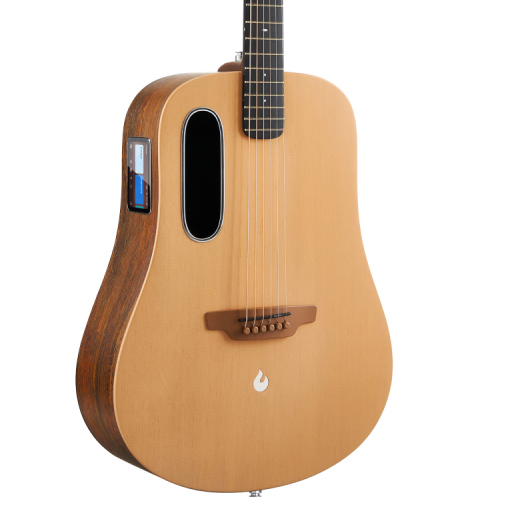
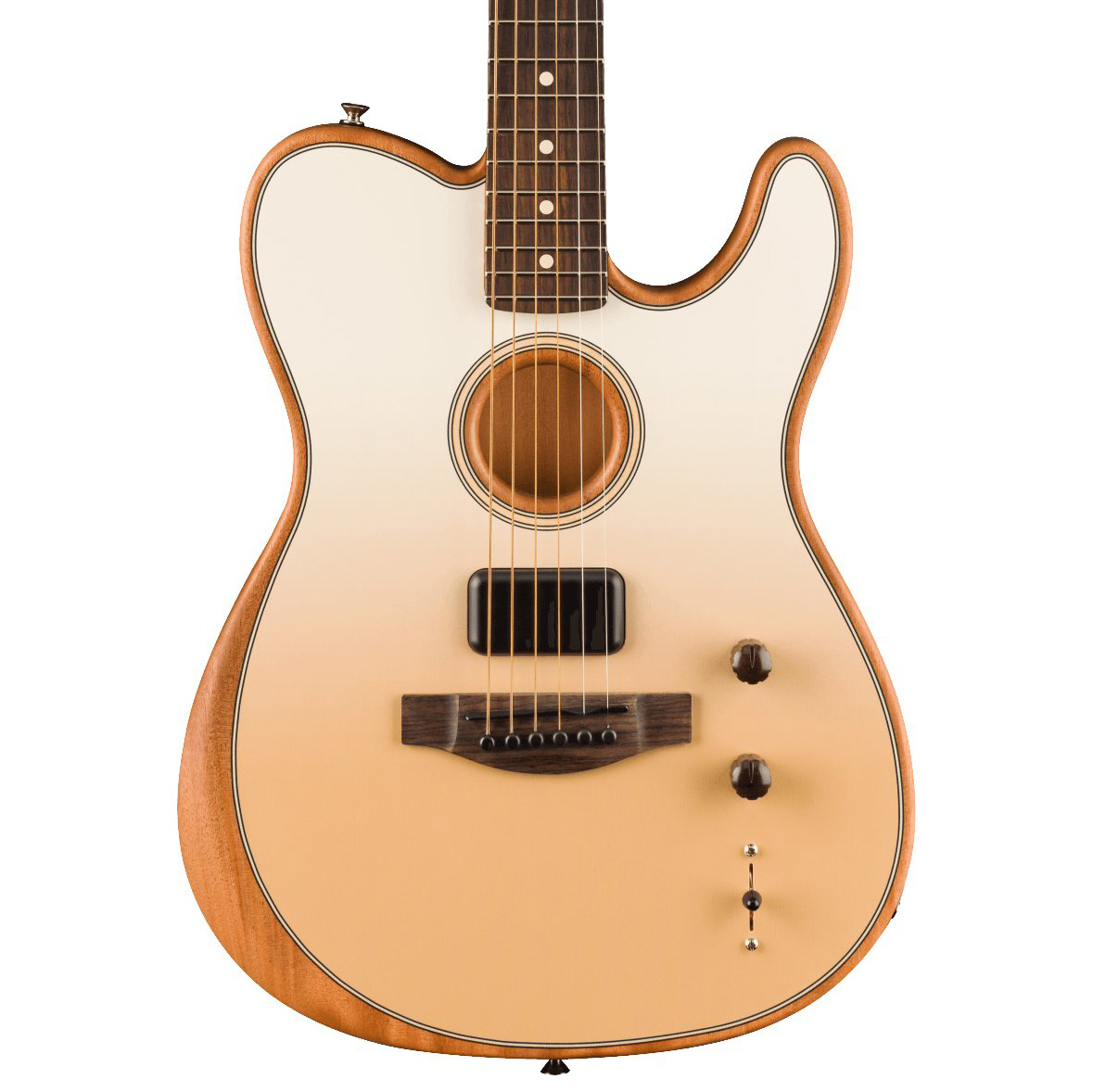
$1,400/£1,199
A different approach to the TransAcoustic with electric-like playability and the option of a chorus effect when plugged in, but alongside a magnetic humbucker and transducer pickup that offers 'voices' based on dreadnoughts and a smaller-bodied acoustic. It's powered by a 9-volt battery.
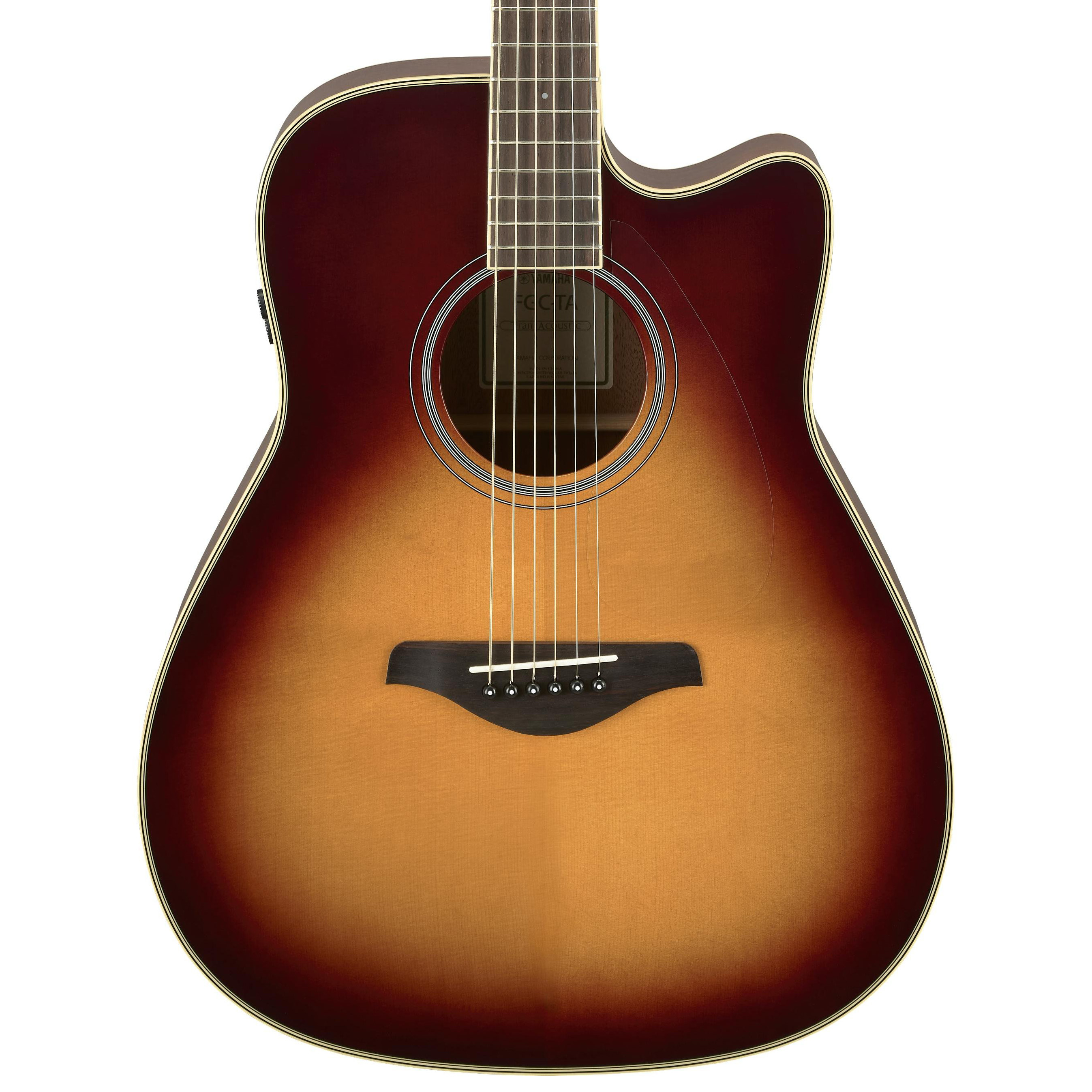
$779/£730
This previous generation cutaway still offers reverb and chorus effects alongside a solid spruce top at a considerably cheaper price. Back and sides are laminate mahogany here and there are also Black, Ruby Red and Vintage Tint finish options alongside this Brown Sunburst.
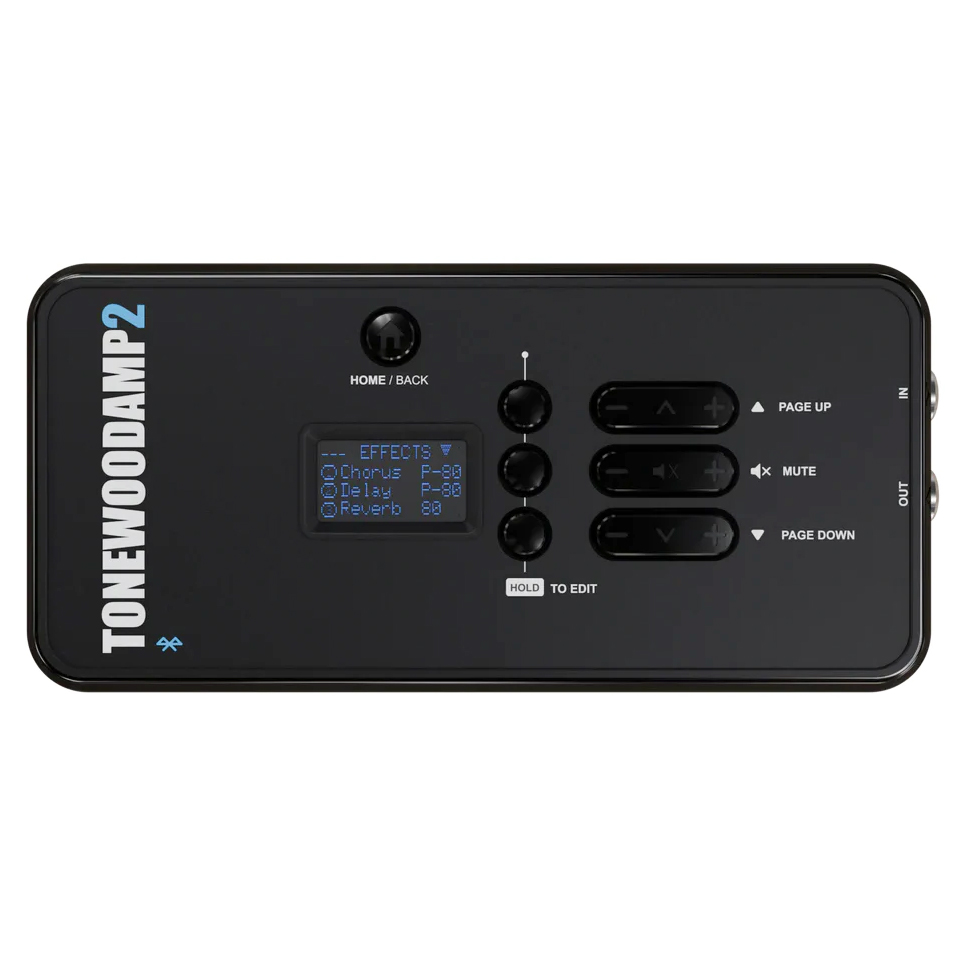
$260/£242
Not a guitar – but a device that can be added to the back of it to generate effects. The latest iteration of the USB-C rechargeable ToneWoodAmp can be fitted to most electro-acoustic guitars via internal magnetic bracing (it's easier to do than you might think) and offers chorus, flanger, vibrato, reverb, delay and tremolo, with the option to have four effects simultaneously. Presets, a companion app, and an approximately 10-hour battery life make this a clear spec upgrade from the first iteration we reviewed.
Yamaha TAG3 C TransAcoustic guitar: Hands-on videos
Michael Lemmo for Yamaha Guitars
Martina Blazeska
- The best acoustic guitars to buy now

Rob is the Reviews Editor for GuitarWorld.com and MusicRadar guitars, so spends most of his waking hours (and beyond) thinking about and trying the latest gear while making sure our reviews team is giving you thorough and honest tests of it. He's worked for guitar mags and sites as a writer and editor for nearly 20 years but still winces at the thought of restringing anything with a Floyd Rose.
